Raw feeding involves offering pets uncooked meat, bones, and organs, mimicking their natural diet. This approach aims to improve health but requires careful consideration of risks and benefits.
What is Raw Feeding?
Raw feeding is a dietary approach where pets are fed uncooked, whole foods such as meat, bones, organs, fruits, and vegetables. This method aims to mimic the natural diet of wild animals, promoting health and well-being. Proponents argue that raw diets reduce processed ingredients, aligning with evolutionary needs. The practice typically involves feeding fresh, unprocessed foods to provide essential nutrients in their most natural form. While some owners swear by its benefits, others raise concerns about safety and balance. Raw feeding remains a controversial yet popular choice for pet owners seeking a more natural feeding alternative for their pets.
History and Evolution of Raw Diets for Pets
Raw feeding traces its roots to the natural diet of wild wolves, emphasizing unprocessed foods like meat, bones, and organs. The practice gained momentum in the 1990s as veterinarians began advocating for natural diets. Inspired by the Paleolithic diet, pet owners adopted similar principles, seeking healthier, chemical-free alternatives; Today, raw diets are meticulously formulated, balancing nutritional needs while addressing safety concerns. This evolution reflects a growing interest in natural pet care, with ongoing debates about its benefits and risks. The movement continues to grow, shaped by scientific research and owner experiences, offering a unique approach to pet nutrition.
Key Principles of a Raw Diet
A raw diet centers on feeding pets unprocessed foods, mirroring their natural consumption in the wild. It primarily includes raw meat, bones, organs, and select fruits and vegetables. The diet avoids cooked or processed ingredients, emphasizing whole, nutrient-rich foods. Balancing is crucial, ensuring adequate proportions of protein, fat, vitamins, and minerals. Variety is also key to prevent deficiencies, offering diverse meat sources and organs. Proper handling and storage are essential to maintain safety and hygiene. This approach aims to mimic the ancestral diet, promoting optimal health and digestion while addressing potential risks like bacterial contamination.

Benefits of Raw Feeding for Pets
Raw feeding can improve digestion, enhance coat shine, support weight management, and boost dental health by reducing plaque and tartar buildup naturally.
Improved Digestion and Nutrient Absorption
Raw feeding can significantly enhance your pet’s digestion and nutrient absorption. Uncooked meat, bones, and organs contain natural enzymes that aid in breaking down food more efficiently. This reduces the risk of digestive disorders and promotes a healthier gut.Pets on raw diets often experience fewer issues with bloating and gas compared to those consuming processed foods. The absence of artificial additives and preservatives allows for better absorption of essential nutrients, including proteins, vitamins, and minerals. This can lead to improved energy levels, healthier stools, and overall better bodily function. Many pet owners report reduced digestive discomfort and a stronger immune system in their pets after switching to a raw diet. These benefits make raw feeding a popular choice for pets with sensitive stomachs or chronic digestive problems.
Enhanced Coat and Skin Health
A raw diet often leads to significant improvements in a pet’s coat and skin health. Many pet owners report a noticeable reduction in shedding and dullness, with coats becoming shinier and softer.
The natural nutrients found in raw meat, organs, and bones help to nourish the skin, reducing the likelihood of irritation and allergies. Pets fed raw diets frequently experience fewer skin infections and less dander, making it easier for owners to manage allergies. Additionally, the absence of artificial additives in raw foods can minimize adverse reactions that often cause skin issues in pets. This makes raw feeding a popular choice for pets with sensitive skin or chronic dermatological problems.
Weight Management and Muscle Tone

A raw diet can significantly support weight management and improve muscle tone in pets. The high protein content from raw meat helps build and maintain lean muscle mass, while the absence of unnecessary carbohydrates prevents unhealthy weight gain. Pets on raw diets often exhibit better metabolism, as natural ingredients promote efficient energy use. The balanced fats and proteins in raw foods also help pets maintain a healthy weight without overeating. Additionally, the absence of fillers and by-products found in processed foods ensures that pets receive only essential nutrients, contributing to a more defined and toned physique. This makes raw feeding particularly beneficial for active pets or those prone to obesity, ensuring they stay fit and energetic.
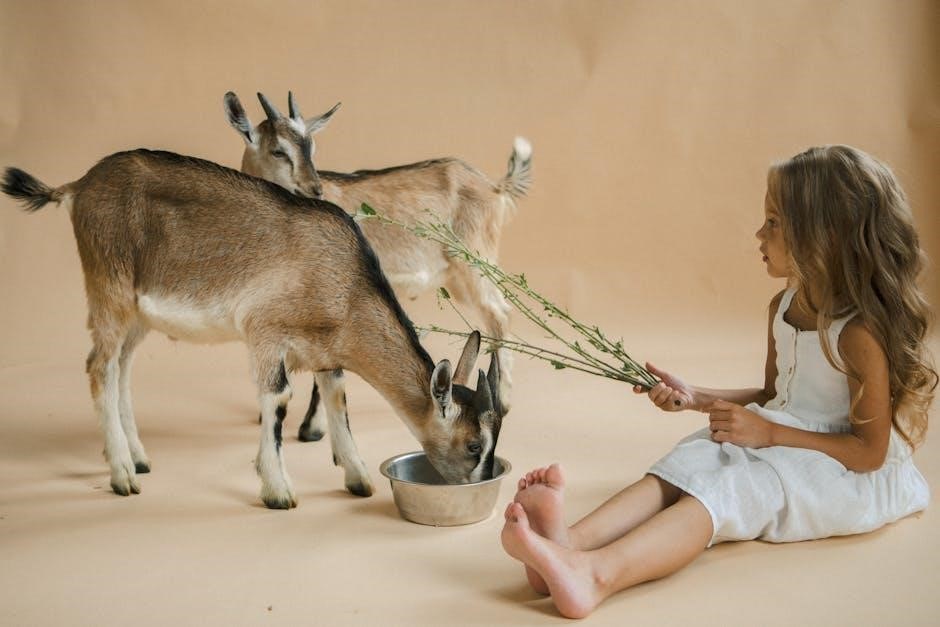
Better Dental Health
A raw diet can significantly improve your pet’s dental health by reducing tartar and plaque buildup. Chewing on raw bones and meat naturally cleans teeth through mechanical abrasion, promoting healthier gums and fresher breath. Unlike processed kibble, raw foods don’t stick to teeth, minimizing bacterial growth and bad odors. Many pet owners report whiter teeth and improved oral health after switching to raw feeding. Additionally, the absence of sugars and starches in raw diets reduces the risk of tooth decay. This natural cleaning process closely mimics how wild animals maintain their dental health, making raw feeding a practical choice for pets with dental issues or those at risk of periodontal disease.
Risks and Challenges of Raw Feeding
Raw feeding poses risks like bacterial contamination, nutritional imbalances, and potential for parasites. Proper formulation and expert guidance are crucial to mitigate these challenges and ensure pet safety.
Bacterial Contamination and Food Safety
Bacterial contamination is a significant concern in raw feeding, as raw meat, bones, and organs can harbor pathogens like Salmonella and E. coli. These bacteria can pose risks to both pets and humans, especially immunocompromised individuals. Proper handling, storage, and hygiene practices are essential to minimize contamination. Owners should use separate utensils and surfaces for raw foods to prevent cross-contamination. Freezing raw foods for a appropriate time can reduce bacterial loads. Despite these precautions, the risk of infection remains, leading to debates about the safety of raw diets. Ensuring food safety is critical to protect both pets and families from potential health hazards. Regular veterinary advice can help mitigate these risks effectively.
Nutritional Imbalances and Deficiencies
One of the primary risks of raw feeding is the potential for nutritional imbalances or deficiencies if the diet is not properly formulated. Raw diets may lack essential vitamins, minerals, or amino acids if they are not carefully planned. For example, insufficient calcium or phosphorus can lead to skeletal issues, while a deficiency in vital vitamins like A or D can cause long-term health problems. Over-supplementation of certain nutrients, such as vitamin D or fish oil, can also create imbalances. To prevent these issues, it is crucial to work with a veterinarian or canine nutritionist to ensure the diet is balanced and meets the pet’s nutritional needs. Regular monitoring of the pet’s health and adjustments to the diet can help mitigate these risks. A well-formulated raw diet, including variety and proper ratios of meat, organs, and supplements, is essential for maintaining optimal health.
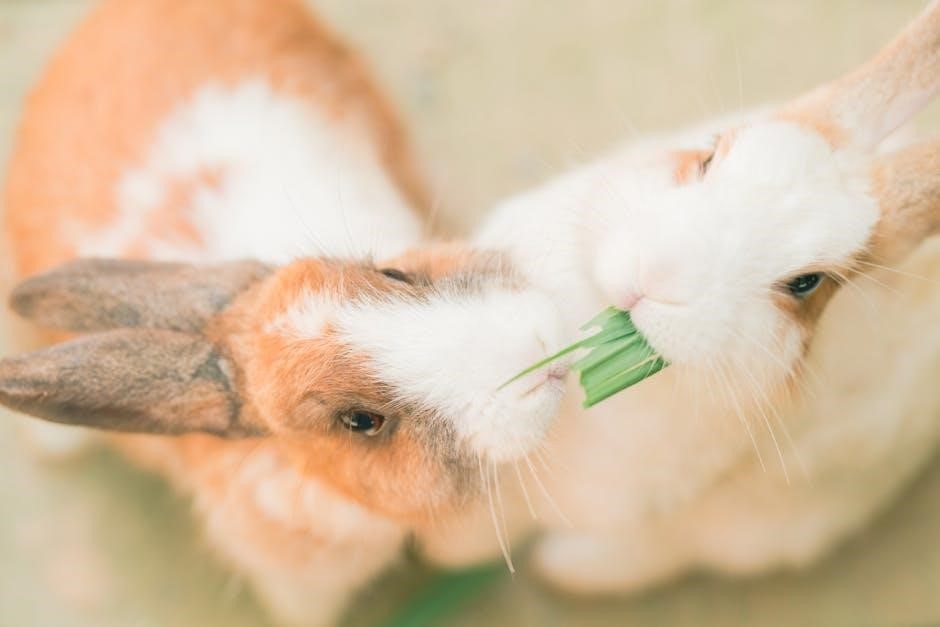
Parasites and Pathogens in Raw Meat
Raw meat can contain harmful parasites and pathogens, posing significant health risks to pets and their owners. Common contaminants include E. coli, Salmonella, and Capillaria, which can cause severe gastrointestinal issues in pets. Additionally, raw meat may harbor parasites like tapeworms or Giardia, which can lead to infections. These pathogens not only affect the pet’s health but can also cross-contaminate surfaces and food, risking human exposure. Proper handling, storage, and freezing of raw ingredients can reduce these risks, but they cannot eliminate them entirely. Pet owners must weigh these potential threats against the perceived benefits of a raw diet and consider consulting a veterinarian for guidance on safe practices to protect both their pets and their families.
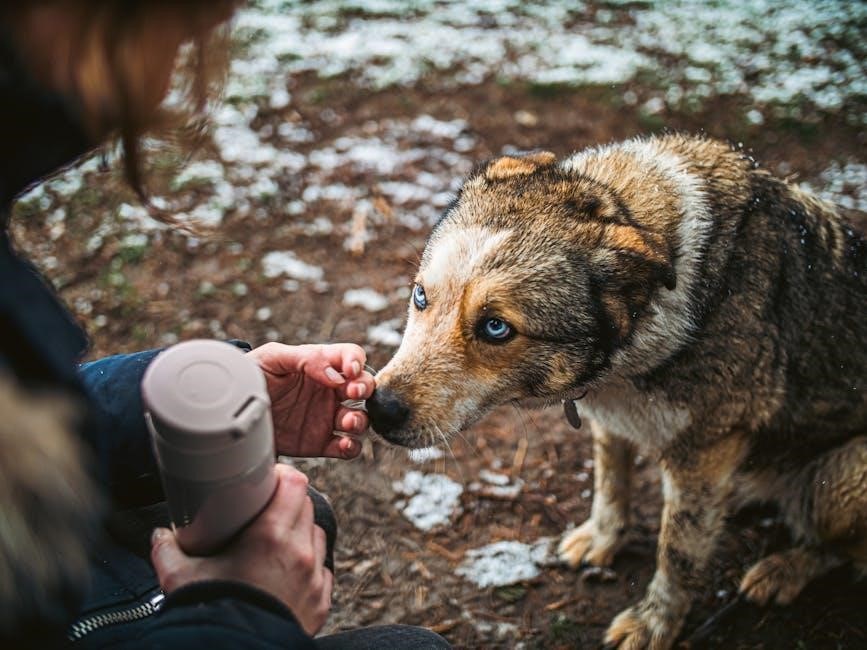
Transitioning Your Pet to a Raw Diet
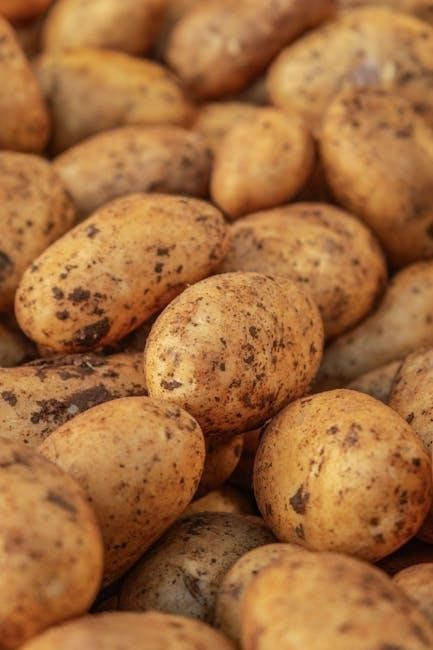
Transitioning to a raw diet requires patience and gradual changes to prevent digestive upset. Start by introducing small portions of raw food alongside their current diet, ensuring a smooth adjustment period for your pet’s digestive system.
Step-by-Step Guide to Introducing Raw Food
Begin by replacing a small portion of your pet’s current meals with raw food, such as 10-20%, and observe their response. Gradually increase the raw food ratio over 7-14 days. Start with easily digestible ingredients like ground meats and organs, then introduce bones and vegetables. Ensure each new food is introduced separately to monitor tolerance. Provide plenty of fresh water and maintain a consistent feeding schedule. Always handle raw ingredients safely to prevent contamination. Consult a veterinarian if digestive issues arise during the transition. Patience and careful observation are key to a successful switch, ensuring your pet adapts smoothly to their new diet.
Gradual Transition to Prevent Digestive Issues
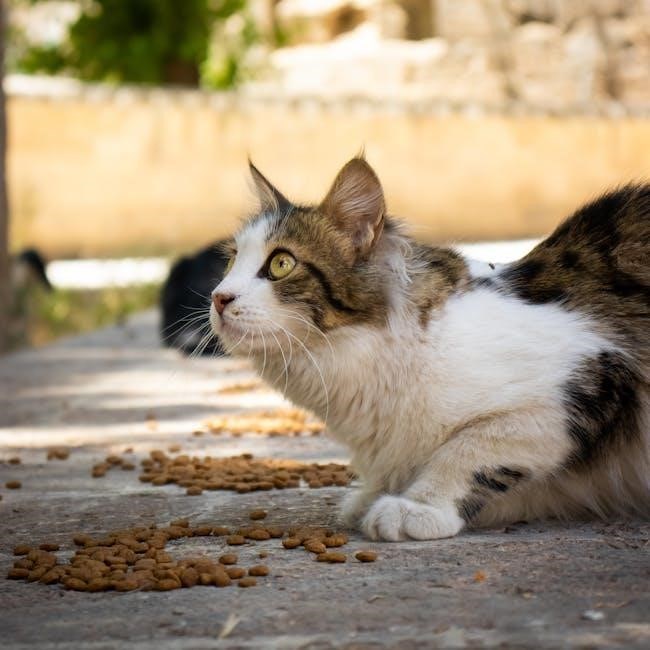
A gradual transition to raw feeding is essential to prevent digestive upset. Start by introducing small amounts of raw food alongside your pet’s current diet, ensuring their system adjusts slowly. Replace 10-20% of their meals with raw ingredients initially, then increase the proportion over 7-14 days. Begin with ground meats and organs, as they are easier to digest, before introducing bones or vegetables. Monitor your pet’s stool quality, energy levels, and overall health during this period. If digestive issues arise, slow the transition or consult a veterinarian for guidance. Patience is key to helping your pet adapt smoothly to their new diet without discomfort or health complications.
Monitoring Your Pet’s Health During the Transition
Monitoring your pet’s health during the transition to a raw diet is crucial to ensure a smooth adjustment. Watch for changes in stool quality, energy levels, and coat condition. A healthy transition may show improvements in digestion, reduced bloating, and shinier fur. However, digestive upset, such as loose stools or vomiting, can occur if the transition is too rapid. Keep a journal to track eating habits, stool consistency, and overall behavior. If adverse reactions persist, consult a veterinarian to adjust the diet or transition pace. Regular check-ups and bloodwork can also help ensure your pet is thriving on the new diet. Pay attention to any signs of nutritional imbalance or infection, such as lethargy or skin issues, and address them promptly.
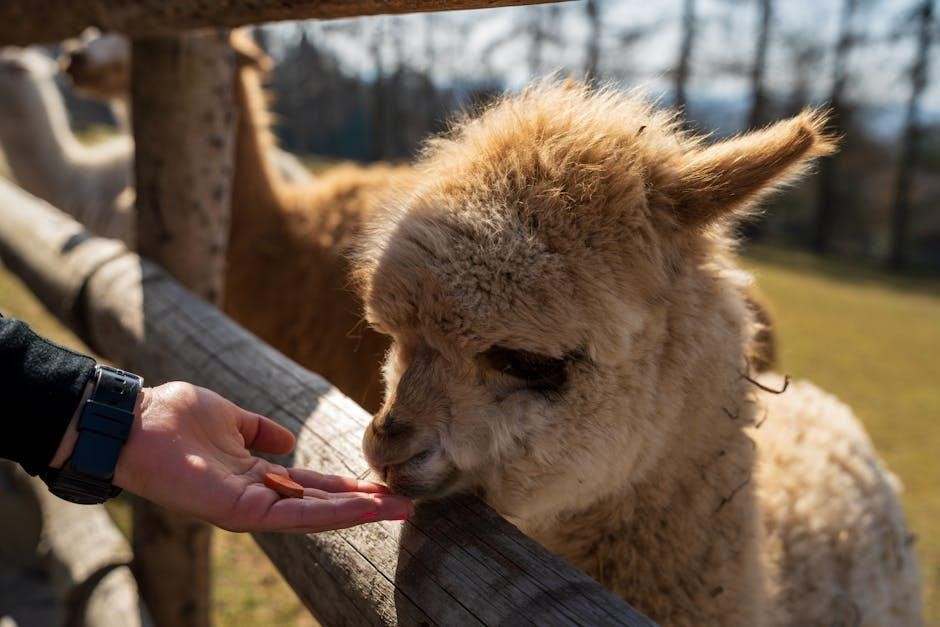
Understanding Raw Diet Composition
A raw diet for pets typically includes uncooked meat, bones, organs, and select fruits and vegetables, aiming to mirror natural eating habits and ensure nutritional balance.
Types of Meat and Organs to Include
A raw diet typically includes a variety of meats like poultry, beef, fish, and lamb, as well as organs such as liver, kidney, and spleen. These components provide essential proteins, vitamins, and minerals. Organs like liver are rich in iron and vitamins, while muscle meats offer lean protein. Fish adds omega-3 fatty acids for skin and joint health. It’s important to balance the diet by rotating protein sources and including both meat and organs to ensure nutritional variety. Proper handling and storage of these ingredients are crucial to maintain safety and prevent contamination. This balanced approach helps mimic a pet’s natural diet, promoting overall health and well-being. Always consult a veterinarian to ensure the diet meets your pet’s specific needs.
Role of Bones in a Raw Diet
Bones are a crucial component of a raw diet, providing essential calcium, phosphorus, and other minerals. They help maintain strong teeth and gums and support overall skeletal health. Raw bones, such as marrow or knucklebones, are rich in nutrients and can aid in cleaning teeth naturally. However, it’s important to choose the right type of bones to avoid obstruction or splintering. Large, meaty bones are ideal, as they are less likely to cause harm. Never feed cooked bones, as they can splinter and pose a risk. Always supervise your pet while feeding bones and consult a veterinarian to ensure they are suitable for your pet’s size and breed. Properly sourced bones can enhance digestion and overall well-being in pets.
Fruits and Vegetables in a Raw Diet
Fruits and vegetables play a supportive role in a raw diet, offering essential vitamins, minerals, and fiber. They can enhance digestion, boost the immune system, and improve skin health. However, they should not dominate the diet, as pets primarily thrive on animal-based nutrients. Safe options include apples, carrots, and green beans, while harmful choices like onions, grapes, and raisins should be avoided. Introduce these gradually to prevent digestive upset. They add variety and natural enzymes but should complement, not replace, meat and organs. Always ensure they are fresh and properly prepared. Consulting a vet is crucial to balance the diet and meet your pet’s specific needs for optimal health and well-being. This approach ensures a holistic and nutritious raw feeding plan tailored to your pet’s requirements.
Safety Precautions for Raw Feeding
Proper handling and storage of raw foods are crucial to prevent bacterial contamination. Always maintain hygiene, use separate utensils, and store raw ingredients safely to ensure food safety.
Handling and Storage of Raw Foods
Proper handling and storage of raw foods are essential to maintain safety and prevent contamination. Always store raw meats, bones, and organs in sealed, airtight containers to avoid cross-contamination. Keep raw ingredients separate from cooked or ready-to-eat foods. Use dedicated utensils and cutting boards for raw foods to minimize the risk of bacterial spread. Wash hands thoroughly before and after handling raw ingredients. Store raw foods at appropriate temperatures—refrigerate at 40°F (4°C) or below, and freeze at 0°F (-18°C) or below. Label and date all stored items to ensure they are used within a safe timeframe. Proper disposal of uneaten raw food is also crucial to prevent spoilage and pests. These practices help protect both pets and humans from potential health risks.
Avoiding Contamination and Cross-Contamination
Avoiding contamination and cross-contamination is critical when handling raw foods for pets. Use separate cutting boards, knives, and utensils exclusively for raw ingredients to prevent bacterial transfer to other foods. Always clean and sanitize surfaces, utensils, and hands thoroughly after handling raw foods. Store raw ingredients in sealed containers to avoid accidental spills or contact with other items. Regularly wash and rinse all tools and surfaces with antibacterial cleaners. Additionally, clean your pet’s feeding area and bowls after each meal to eliminate residual bacteria. These practices significantly reduce the risk of contamination and ensure a safer feeding environment for your pet.
Hygiene Practices for Pet Owners
Proper hygiene is essential to ensure safety when handling raw pet food. Always wash your hands thoroughly with soap and water before and after handling raw ingredients. Clean and sanitize all utensils, cutting boards, and surfaces immediately after use to prevent bacterial growth. Regularly disinfect your pet’s food bowls and feeding area to maintain cleanliness. Store raw foods in sealed containers to avoid cross-contamination with other items in the refrigerator. Additionally, ensure your pet’s nails and paws are clean after meals to prevent the spread of bacteria. By following these hygiene practices, you can minimize health risks for both your pet and your family.
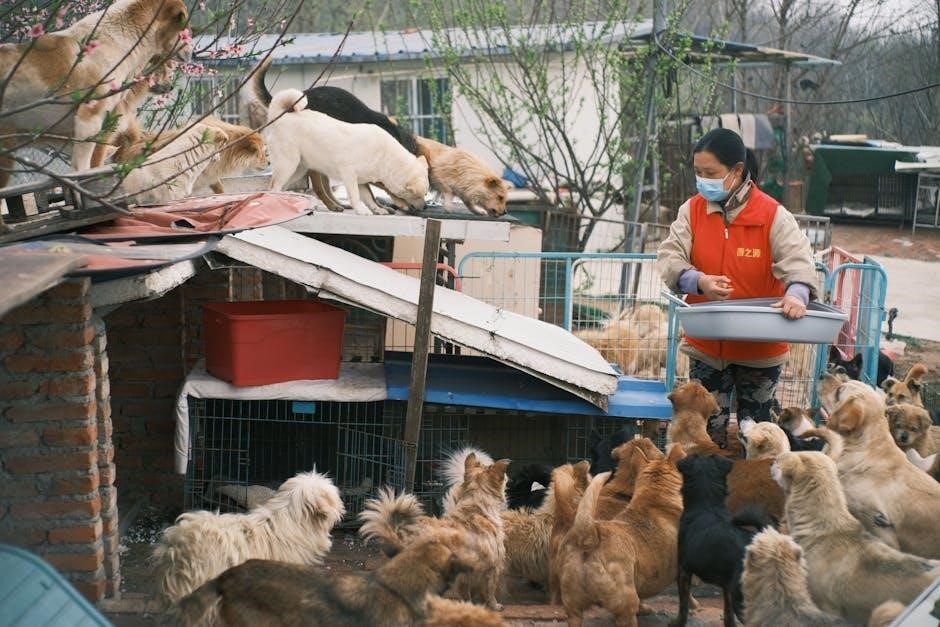
Expert Insights and Veterinary Perspectives
Veterinarians emphasize the importance of informed decisions regarding raw feeding, highlighting risks like bacterial contamination and nutritional imbalances, while some experts advocate for balanced, science-backed raw diets.
Veterinary Opinions on Raw Feeding
Veterinarians hold varied opinions on raw feeding, with some expressing concerns about bacterial contamination and nutritional imbalances. The American Veterinary Medical Association (AVMA) discourages raw feeding due to the risk of pathogens like Salmonella and E. coli, which can harm both pets and humans. However, some holistic veterinarians support raw diets, emphasizing their potential to improve digestion, reduce allergies, and promote overall health. They argue that a properly formulated raw diet can mimic a pet’s natural diet, offering benefits like cleaner teeth and increased energy. Still, most veterinarians agree that pet owners must be aware of the risks and ensure the diet is balanced to prevent deficiencies or health issues.
Scientific Studies on Raw Diets
Scientific studies on raw diets for pets reveal mixed results. Some research highlights improved digestion, reduced inflammation, and enhanced nutrient absorption in pets fed raw food. Studies also suggest potential benefits for coat health and dental hygiene due to the absence of processed ingredients. However, concerns about bacterial contamination, such as Salmonella and E. coli, are well-documented, posing risks to both pets and their owners. Additionally, studies warn of nutritional imbalances if the diet is not properly formulated. While some studies support the benefits of raw feeding, others emphasize the need for caution and rigorous testing. The debate continues, with veterinarians and researchers urging pet owners to weigh the evidence carefully before making a decision.
Myths and Misconceptions About Raw Feeding
One common myth is that raw feeding is inherently dangerous due to bacterial risks, though proper handling can mitigate this. Another misconception is that all raw diets are nutritionally balanced, which isn’t always true. Many believe raw diets are too expensive or time-consuming, but with planning, they can be manageable. Some think raw feeding cures all health issues, but individual results vary. While some myths hold truth, others are exaggerated, making it essential to separate fact from fiction when considering raw feeding for pets. Education and consultation with veterinarians are key to making informed decisions.
Raw feeding can offer significant health benefits for pets when done correctly, but it requires careful planning and consideration. Always consult a veterinarian to ensure the best outcomes.
Is Raw Feeding Right for Your Pet?
Determining if raw feeding suits your pet involves assessing their health, lifestyle, and your commitment to preparing balanced meals. Consult a vet to ensure it’s the best choice for your pet’s specific needs and to discuss potential risks and benefits. Some pets thrive on raw diets, experiencing improved digestion and coat health, while others may face challenges due to nutritional imbalances or bacterial contamination. A gradual transition and careful monitoring are crucial to avoid digestive issues. Ultimately, raw feeding can be beneficial, but it requires dedication and knowledge to implement safely and effectively for your pet’s well-being.
Long-Term Benefits and Considerations
Long-term raw feeding can lead to sustained health improvements, such as enhanced coat quality, better dental health, and improved energy levels. However, it’s crucial to maintain a balanced diet to prevent nutritional deficiencies. Pet owners should regularly consult with veterinarians to monitor their pet’s health and adjust the diet as needed. Consistency and proper meal preparation are key to maximizing benefits and minimizing risks. Over time, pets may experience fewer digestive issues and improved overall well-being. Nonetheless, the commitment to providing a varied and nutrient-rich raw diet requires ongoing effort and education to ensure long-term success and optimal health for your pet.